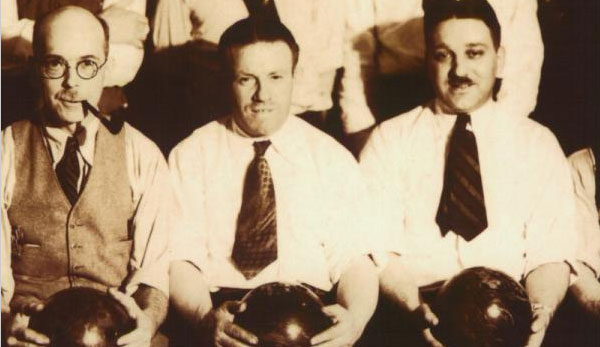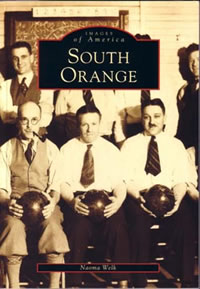Images of America: South Orange
You won’t want to miss reading Naoma Welk’s bestselling and informative picture history books about South Orange!
Images of America: South Orange and Images of America: South Orange Revisited
From the mid-1800s through the late 1900s, life in South Orange was a mirror of events taking place on a national and global level. Evolutions in population, transportation, education, and culture played an important part in South Orange’s growth from a small farming village to the bustling community it is today. For more than 150 years, the village’s excellent road and rail infrastructure, salubrious climate, and close proximity to Manhattan has drawn residents from a wide range of backgrounds, interests, and talents. Today, many South Orangeresidents enjoy the convenience of working in a bustling city and at the same time, living in the late 19th-and 20th-century homes on streets illuminated by Victorian gaslights. These are just some of the factors that make South Orange a unique community.
Naoma Welk lives in an 1885 Queen Anne-Victorian home in Montrose Park, the historic district of South Orange, and is vice president of the Montrose Park Historic District Association. The author of South Orange, Welk is pleased to present South Orange Revisited, which draws from the collections of the South Orange Public Library, Seton Hall University archives, the New Jersey Historical Society and many private collections.
The Images of America series celebrates he history of neighborhoods, towns and cities across the country. Using archival photographs, each title presents the distinctive stories from the past that shape the character of the community today. Arcadia is proud to play a part in the preservation of local heritage, making history available to all.
Images of America: South Orange (Published by Arcadia 2002)
With more than two hundred vintage photographs, South Orange presents a distinctive view of a village that has evolved from a rural to sophisticated landscape. Situated next to a 2500 acre forest preserve filled with wildlife, South Orange is just a half-hour drive from Manhattan.
In the early 1880s South Orange was popular for its reputation as a healthy, relaxing destination — an escape from the increasingly industrial big-city landscapes of the region. Today, this bedroom community presents a unique mix of cosmopolitan and suburban environments.
South Orange follows the village through growth and development, illustrating how it has maintained much of its original character. The many extant homes in a wide variety of late-architectural styles hint at the summer afternoon tea parties of the 19th-century.
The gas-service lamps lining the streets were once fueled by whale oil. The home of the Orange Lawn Tennis Club and Seton Hall University, South Orange was also the dwelling place of W.F. Havemeyer, real-estate tycoon, and Louis Bamberger, founder of Bamberger’s Department Store, now known as Macy’s.
Another South Orange notable was William Frederick Allen, editor of the Official Railway Guide, who promoted the use of standard time in the United States.
How to purchase these two great books:
Both books can be purchased through MPHDA. Purchase prise is $20 per book. Sales through Rocket Ship & Print (formerly known as Mail Boxes, Etc.), and the South Orange Public Library also benefit Montrose Park Historic District Assoc.
The book is also at various retailers in South Orange, Maplewood, Barnes and Noble, Borders, amazon.com, and barnesand noble.com.


